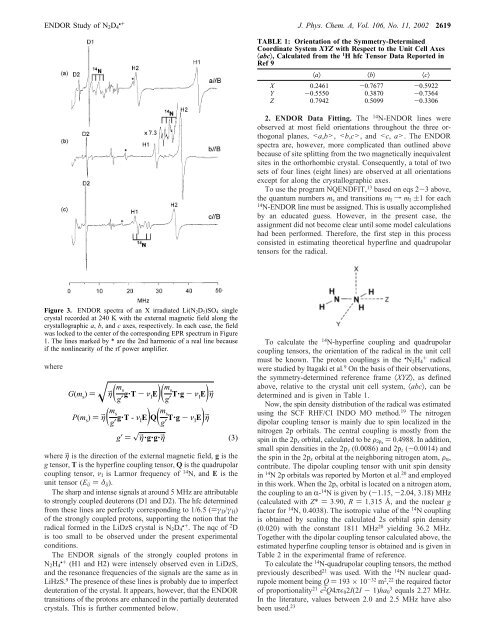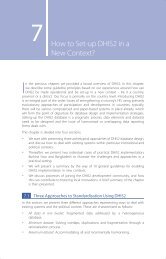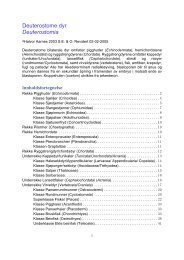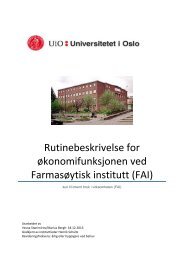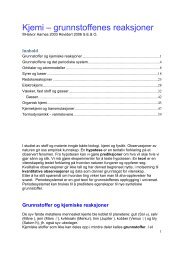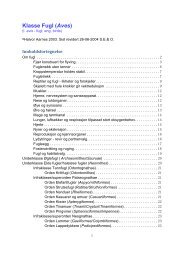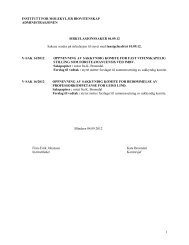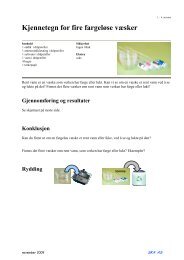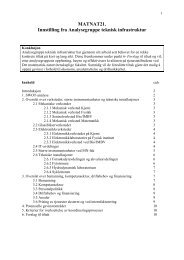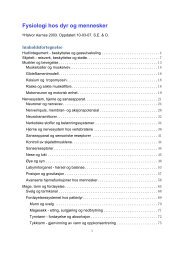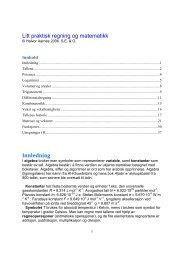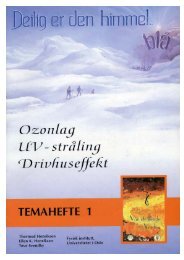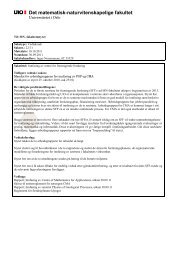ENDOR Study of 14N Hyperfine and Quadrupole Couplings of ...
ENDOR Study of 14N Hyperfine and Quadrupole Couplings of ...
ENDOR Study of 14N Hyperfine and Quadrupole Couplings of ...
Create successful ePaper yourself
Turn your PDF publications into a flip-book with our unique Google optimized e-Paper software.
<strong>ENDOR</strong> <strong>Study</strong> <strong>of</strong> N2D4 •+ J. Phys. Chem. A, Vol. 106, No. 11, 2002 2619<br />
Figure 3. <strong>ENDOR</strong> spectra <strong>of</strong> an X irradiated Li(N2D5)SO4 single<br />
crystal recorded at 240 K with the external magnetic field along the<br />
crystallographic a, b, <strong>and</strong> c axes, respectively. In each case, the field<br />
was locked to the center <strong>of</strong> the corresponding EPR spectrum in Figure<br />
1. The lines marked by * are the 2nd harmonic <strong>of</strong> a real line because<br />
if the nonlinearity <strong>of</strong> the rf power amplifier.<br />
where<br />
G(m s ) ) ηb( m s<br />
g′ g‚T - ν I E)( m s<br />
g′ T‚g - ν I E)ηb<br />
P(m s ) ) ηb( m s<br />
g′ g‚T - ν I E)Q( m s<br />
g′ T‚g - ν I E)ηb<br />
g′ ) ηb‚g‚g‚ηb (3)<br />
where ηb is the direction <strong>of</strong> the external magnetic field, g is the<br />
g tensor, T is the hyperfine coupling tensor, Q is the quadrupolar<br />
coupling tensor, νI is Larmor frequency <strong>of</strong> 14 N, <strong>and</strong> E is the<br />
unit tensor (Eij ) δij).<br />
The sharp <strong>and</strong> intense signals at around 5 MHz are attributable<br />
to strongly coupled deuterons (D1 <strong>and</strong> D2). The hfc determined<br />
from these lines are perfectly corresponding to 1/6.5 ()γD/γH)<br />
<strong>of</strong> the strongly coupled protons, supporting the notion that the<br />
radical formed in the LiDzS crystal is N2D4 •+ . The nqc <strong>of</strong> 2 D<br />
is too small to be observed under the present experimental<br />
conditions.<br />
The <strong>ENDOR</strong> signals <strong>of</strong> the strongly coupled protons in<br />
N2H4 •+ (H1 <strong>and</strong> H2) were intensely observed even in LiDzS,<br />
<strong>and</strong> the resonance frequencies <strong>of</strong> the signals are the same as in<br />
LiHzS. 9 The presence <strong>of</strong> these lines is probably due to imperfect<br />
deuteration <strong>of</strong> the crystal. It appears, however, that the <strong>ENDOR</strong><br />
transitions <strong>of</strong> the protons are enhanced in the partially deuterated<br />
crystals. This is further commented below.<br />
TABLE 1: Orientation <strong>of</strong> the Symmetry-Determined<br />
Coordinate System XYZ with Respect to the Unit Cell Axes<br />
〈abc〉, Calculated from the 1H hfc Tensor Data Reported in<br />
Ref 9<br />
〈a〉 〈b〉 〈c〉<br />
X 0.2461 -0.7677 -0.5922<br />
Y -0.5550 0.3870 -0.7364<br />
Z 0.7942 0.5099 -0.3306<br />
2. <strong>ENDOR</strong> Data Fitting. The 14 N-<strong>ENDOR</strong> lines were<br />
observed at most field orientations throughout the three orthogonal<br />
planes, , , <strong>and</strong> . The <strong>ENDOR</strong><br />
spectra are, however, more complicated than outlined above<br />
because <strong>of</strong> site splitting from the two magnetically inequivalent<br />
sites in the orthorhombic crystal. Consequently, a total <strong>of</strong> two<br />
sets <strong>of</strong> four lines (eight lines) are observed at all orientations<br />
except for along the crystallographic axes.<br />
To use the program NQENDFIT, 13 based on eqs 2-3 above,<br />
the quantum numbers ms <strong>and</strong> transitions mI f mI (1 for each<br />
14 N-<strong>ENDOR</strong> line must be assigned. This is usually accomplished<br />
by an educated guess. However, in the present case, the<br />
assignment did not become clear until some model calculations<br />
had been performed. Therefore, the first step in this process<br />
consisted in estimating theoretical hyperfine <strong>and</strong> quadrupolar<br />
tensors for the radical.<br />
To calculate the 14 N-hyperfine coupling <strong>and</strong> quadrupolar<br />
coupling tensors, the orientation <strong>of</strong> the radical in the unit cell<br />
must be known. The proton couplings in the • N2H4 + radical<br />
were studied by Itagaki et al. 9 On the basis <strong>of</strong> their observations,<br />
the symmetry-determined reference frame 〈XYZ〉, as defined<br />
above, relative to the crystal unit cell system, 〈abc〉, can be<br />
determined <strong>and</strong> is given in Table 1.<br />
Now, the spin density distribution <strong>of</strong> the radical was estimated<br />
using the SCF RHF/CI INDO MO method. 19 The nitrogen<br />
dipolar coupling tensor is mainly due to spin localized in the<br />
nitrogen 2p orbitals. The central coupling is mostly from the<br />
spin in the 2px orbital, calculated to be F2px ) 0.4988. In addition,<br />
small spin densities in the 2py (0.0086) <strong>and</strong> 2pz (-0.0014) <strong>and</strong><br />
the spin in the 2px orbital at the neighboring nitrogen atom, FR,<br />
contribute. The dipolar coupling tensor with unit spin density<br />
in 14 N 2p orbitals was reported by Morton et al. 20 <strong>and</strong> employed<br />
in this work. When the 2px orbital is located on a nitrogen atom,<br />
the coupling to an R- 14 N is given by (-1.15, -2.04, 3.18) MHz<br />
(calculated with Z* ) 3.90, R ) 1.315 Å, <strong>and</strong> the nuclear g<br />
factor for 14 N, 0.4038). The isotropic value <strong>of</strong> the 14 N coupling<br />
is obtained by scaling the calculated 2s orbital spin density<br />
(0.020) with the constant 1811 MHz 20 yielding 36.2 MHz.<br />
Together with the dipolar coupling tensor calculated above, the<br />
estimated hyperfine coupling tensor is obtained <strong>and</strong> is given in<br />
Table 2 in the experimental frame <strong>of</strong> reference.<br />
To calculate the 14 N-quadrupolar coupling tensors, the method<br />
previously described 21 was used. With the 14 N nuclear quadrupole<br />
moment being Q ) 193 × 10 -32 m 2 , 22 the required factor<br />
<strong>of</strong> proportionality 21 e 2 Q4πɛ02I(2I - 1)ha0 3 equals 2.27 MHz.<br />
In the literature, values between 2.0 <strong>and</strong> 2.5 MHz have also<br />
been used. 23


